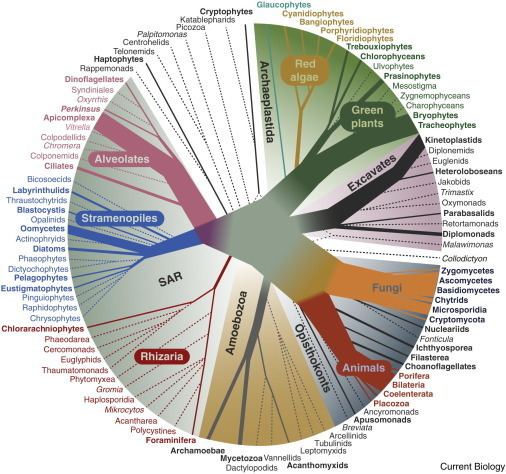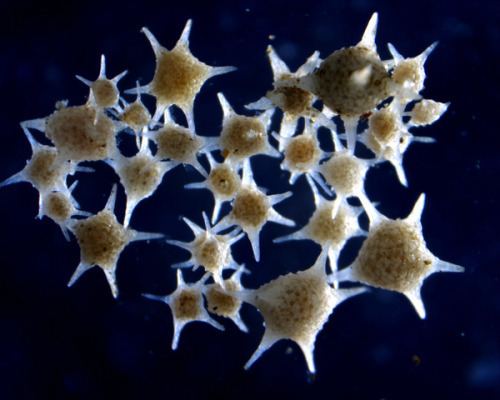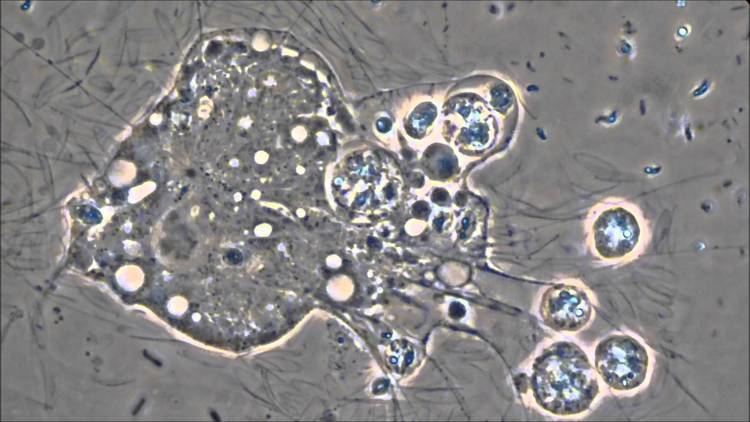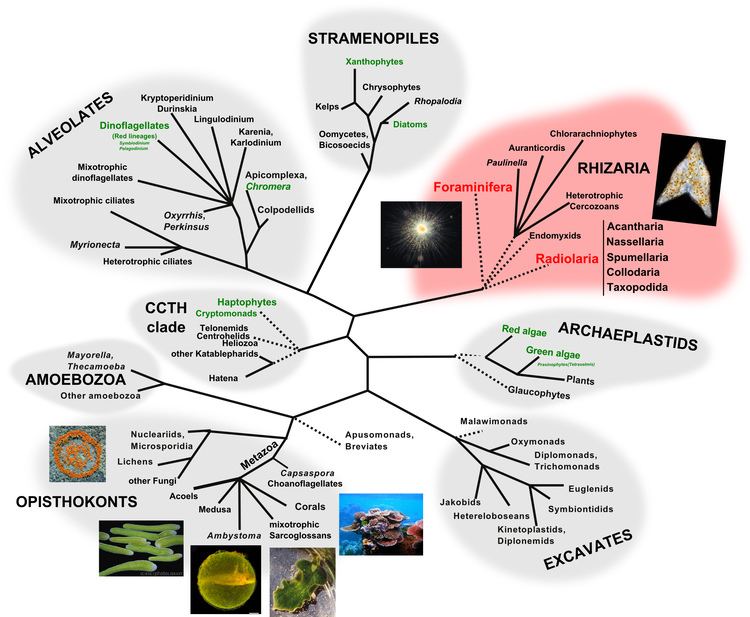Higher classification Eukaryote | Scientific name Rhizaria Rank Kingdom | |
Lower classifications Forams, Radiolaria | ||
Rhizaria microscopy
The Rhizaria are a species-rich supergroup of mostly unicellular eukaryotes. A multicellular form has also been described. This supergroup was proposed by Cavalier-Smith in 2002. Being described mainly from rDNA sequences, they vary considerably in form, having no clear morphological distinctive characters (synapomorphies), but for the most part they are amoeboids with filose, reticulose, or microtubule-supported pseudopods. Many produce shells or skeletons, which may be quite complex in structure, and these make up the vast majority of protozoan fossils. Nearly all have mitochondria with tubular cristae.
Contents
Rhizaria
Groups
The three main groups of Rhizaria are:


A few other groups may be included in the Cercozoa, but on some trees appear closer to the Foraminifera. These are the Phytomyxea and Ascetosporea, parasites of plants and animals, respectively, and the peculiar amoeba Gromia. The different groups of Rhizaria are considered close relatives based mainly on genetic similarities, and have been regarded as an extension of the Cercozoa. The name Rhizaria for the expanded group was introduced by Cavalier-Smith in 2002, who also included the centrohelids and Apusozoa.
Another order that appears to belong to this taxon is the Mikrocytida. These are parasites of oysters.
Evolutionary relationships

Rhizaria are part of the bikont clade along with Archaeplastida, Chromalveolata, Excavata, and some smaller, unresolved groups such as Apusozoa and Centrohelida. As bikonts, they all descend from a heterotrophic eukaryote ancestor with two flagella.

Historically, many rhizarians were considered animals because of their motility and heterotrophy. However, when a simple animal-plant dichotomy was superseded by a recognition of additional kingdoms, taxonomists generally placed rhizarians in the kingdom Protista. When scientists began examining the evolutionary relationships among eukaryotes using molecular data, it became clear that the kingdom Protista was paraphyletic. Rhizaria appear to share a common ancestor with Stramenopiles and Alveolates forming part of the SAR (Stramenopiles+Alveolates+Rhizaria) super assemblage. Rhizaria has been supported by molecular phylogenetic studies as a monophyletic group.
Phylogeny
Phylogeny based on Bass et al. 2009, Howe et al. 2011, and Silar 2016.


